Not too long ago, we published a post about the three most underrated nootropics. In this post we're going to look at the exact opposite: the 3 most overrated nootropics.
All 3 of these are nootropics I've personally tried. It's not that these are bad substances or that they don't work – just that I feel there are better options available. In this post, we'll take a look not only at the 3 most overrated nootropics, but also at some alternatives.
The 3 Most Overrated Nootropics
Before I even get to the list, I need to mention something that regular NZ readers should already be aware of. When it comes to nootropics, some substances work great for some people and not at all for others. The only way to know what will or won't work for you is to try them for yourself.
There are people out there who absolutely love the nootropics on this list. In some cases, they can be more effective than the substances on our list of the 3 most underrated nootropics. Don't rule them out because I personally find their effects to be underwhelming.
That's all this post is: a list of 3 nootropics that I personally think are overrated. If your experience with any of these substances has been different, I'd love to hear about it in the comments section at the bottom of the page. Now that I've gotten that little disclaimer out of the way, here are – in my opinion – the three most overrated nootropics.
1. Piracetam
Part of me almost doesn't want to list this substance because of its place in nootropic history. After all, it was piracetam that inspired the creation of the word nootropic back in 1972. However, out of all the different racetams I've tried, piracetam has been one of my least favorites.
 The racetams are chemically similar substances, many of which have nootropic properties. Piracetam was the first to be created in the 1950s, but it certainly wasn't the last. New racetams continue to be created and developed as prescription drugs to this day.
The racetams are chemically similar substances, many of which have nootropic properties. Piracetam was the first to be created in the 1950s, but it certainly wasn't the last. New racetams continue to be created and developed as prescription drugs to this day.
In the 60-70 years since piracetam was first created, several better nootropic racetams have become available. I've written extensively about many here at the Nootropics Zone and will get to some of them in a moment. But what about piracetam? Is there any reason to consider using it as a nootropic today or is piracetam a thing of the past?
The truth is, there are several reasons to consider using it. For starters, piracetam is often an attractive choice for people new to nootropics. Many choose piracetam as their first nootropic because it has a long history of use and mounds of evidence to support its safety and effectiveness. Additionally, it's relatively inexpensive, available from trusted vendors, and stacks well with most other nootropics.
If you're interested in trying a nootropic but don't know where to start, piracetam can be a good choice. However, compared to many newer racetams, its effects can be underwhelming. Personally, I don't get very much out of it. However, I've talked to a few people who's lives have been transformed by piracetam. It's all about experimenting on yourself and figuring out what works for you.
So, What's Similar-But-Better Than Piracetam?
There are several racetams that I like better than piracetam. In fact, I like every other racetam that I've tried better. If I had to pick a favorite, I couldn't – but I could pick two: phenylpiracetam and fasoracetam.
![]() Phenylpiracetam was developed in Soviet Russia in the early 1980s as a treatment for space-related stress among cosmonauts. It was created by slightly altering a piracetam molecule. Today, it's one of the most widely used nootropic racetams. I find that phenylpiracetam increases my motivation and focus, leading to greater productivity. You can learn more here: Phenylpiracetam – The Best Adderall Alternative?
Phenylpiracetam was developed in Soviet Russia in the early 1980s as a treatment for space-related stress among cosmonauts. It was created by slightly altering a piracetam molecule. Today, it's one of the most widely used nootropic racetams. I find that phenylpiracetam increases my motivation and focus, leading to greater productivity. You can learn more here: Phenylpiracetam – The Best Adderall Alternative?
Fasoracetam is another piracetam derivative. This one has been the subject of much less scientific study than piracetam or phenylpiracetam. However, the research that has been done is encouraging. Fasoracetam is currently being investigated as a treatment for attention-deficit hyperactivity disorder (ADHD) and other cognitive disorders. This doesn't surprise me. I find it helps me to feel less anxious and more focused. You can learn more here: Fasoracetam – An Anxiety-Reducing Nootropic.
If you're an experienced nootropic user like me, piracetam probably doesn't hold much appeal. But if you're inexperienced or just looking to try something new, piracetam is worth looking into. You can learn more about it here: Piracetam – The First Nootropic.
2. Adrafinil
When I first became interested in nootropics many years ago, this one was talked about a lot. Now, not so much. That's because several better alternatives to adrafinil have become widely available. We'll take a look at a couple of them in a moment. First, let's see what adrafinil is.
 This substance was first created in France in the 1970s where it was used as a prescription drug for several decades. Adrafinil is categorized as a eugeroic – a wakefulness-promoting agent. Drugs in this class are used to treat certain sleep-and-other disorders by increasing wakefulness and mental alertness.
This substance was first created in France in the 1970s where it was used as a prescription drug for several decades. Adrafinil is categorized as a eugeroic – a wakefulness-promoting agent. Drugs in this class are used to treat certain sleep-and-other disorders by increasing wakefulness and mental alertness.
Adrafinil itself doesn't have a eugeroic effect. However, when taken orally the body converts adrafinil into modafinil (as well as its two major metabolites, modafinil carboxylate and modafinil sulfone), which does. In other words, adrafinil is a prodrug of modafinil.
That right there is a big part of the reason why adrafinil isn't as popular now as it has been in the past. Modafinil has become widely available all over the world and most users prefer it to adrafinil. Since the body needs to convert adrafinil to modafinil for it to work, this step can be eliminated by just taking modafinil directly.
Since adrafinil needs to be converted to modafinil in the body, it takes longer for the effects to be felt. And a higher dosage is needed, approximately 2-3 times higher. Although the potential benefits and side effects of adrafinil and modafinil are very similar, adrafinil may be slightly harsher on the liver. Since it needs to be converted in the body, adrafinil puts additional strain on the liver that modafinil does not.
As far as I can tell, the actual nootropic effects of adrafinil and modafinil are indistinguishable. I've tried both and they each provide the same level of wakefulness and focus. However, as mentioned above, adrafinil takes longer to kick in. Now let's take a look at a couple alternatives to adrafinil.
What's Similar-But-Better Than Adrafinil?
Several different eugeroics are available from nootropic vendors today. They are all structurally similar to adrafinil and all share the suffix -afinil. Two of these have been extensively studied, one of which has already been mentioned: modafinil. The other is armodafinil, a slightly newer and stronger eugeroic.
![]() Modafinil is considered to be one of, if not the best nootropics available today. Like adrafinil, it was developed in France in the 1970s. Modafinil has been the subject of much scientific study, including large-scale clinical trials in several countries. It is considered to be effective, safe for most people, and is widely available. You can learn more here: Modafinil – A Popular and Powerful Nootropic.
Modafinil is considered to be one of, if not the best nootropics available today. Like adrafinil, it was developed in France in the 1970s. Modafinil has been the subject of much scientific study, including large-scale clinical trials in several countries. It is considered to be effective, safe for most people, and is widely available. You can learn more here: Modafinil – A Popular and Powerful Nootropic.
Armodafinil wasn't developed until decades later. Though it hasn't been studied nearly as much as modafinil, it has been found to be just as safe and effective. Milligram for milligram, armodafinil is a little more potent, so a slightly lower dosage is needed. Also, the effects of armodafinil tend to last a little longer. You can learn more here: Armodafinil For Cognitive Enhancement.
With modafinil and armodafinil widely available, adrafinil is rarely used as a nootropic anymore. I haven't met anyone who prefers it to either of those. However, adrafinil is still sold by several nootropic vendors. If interested, you can learn more here: Adrafinil For Focus.
3. Ginseng
Long before I'd ever heard the word nootropic, I was already familiar with ginseng. I'd even tried it a couple of times dating all the way back to my teens. In the late 1990s, I got my hands on a thick paperback published by the PDR (Physician's Desk Reference) that listed over a hundred alternative remedies. Ginseng was one of the few over-the-counter (OTC) supplements I'd read about that looked promising, safe, had at least some evidence to support its use and – most importantly – I could get my hands on.

Ginseng Root
Unfortunately, I didn't really notice much benefit from taking ginseng then and I don't notice much now. Back in the late 1990s and early 2000s, I recall trying Korean ginseng and American ginseng. Over the past 5-10 years, I've revisited Korean ginseng, which is said to be superior. Like all those years earlier, it didn't do anything for me.
So, what is ginseng? Odds are you've heard of it. Ginseng's listed as an ingredient in countless nootropic blends, a variety of energy drinks, and many other products. This is a plant that grows naturally in several parts of the world and has been used in traditional medicine for centuries. Some nootropic users claim ginseng can improve memory, energy levels, and more.
And there is some science to back up these claims. However, there are also some studies that have been done showing ginseng to have virtually no effect. Of 44 studies conducted on ginseng between 2005-2015, 29 of them showed positive-buy-weak results. The remaining 15 studies showed no effect whatsoever. So, in other words, the evidence for the use of ginseng as a nootropic is inconclusive.
That being said, some people insist ginseng gives them a modest-but-noticeable energy boost and improves their mood, memory, and overall sense of well-being. And while ginseng's effectiveness remains to be fully established, its safety already has been. In fact, the Food and Drug Administration (FDA) has granted ginseng GRAS (generally regarded as safe) status.
This makes ginseng a great option for anyone who just wants to dip their toe into the world of nootropics to test the waters. Odds are ginseng isn't going to change your life. But if it's very safe and there's at least the possibility it'll work, why not give it a try? Maybe you'll be one of the lucky few it seems to benefit. Just make sure to check with your doctor first if you're taking any prescription meds because ginseng can decrease the levels of some drugs like warfarin and certain sedatives.
Though I've never gotten much out of ginseng, I have gotten a lot out of plants like it. Several different types of plants have been used in traditional medicine over the centuries, many of which are used as nootropics today. I'll tell you about two of my favorites below.
What's Similar-But-Better Than Ginseng?
Ginseng and a number of other nootropic plants sometime get lumped together as adaptogens. These are substances that are purported to reduce the effects of stress and to stabilize the systems of the body. Though I like the term adaptogen less and less every time I hear it (as its definition tends to change from one context to the next), there are several plants in this category that I do like – some of them a lot.
![]() Possibly my favorite plant often referred to as an adaptogen is ashwagandha. I find it's great for reducing anxiety and chronic stress. And plenty of others have reported the same thing. Ashwagandha has been extensively studied and shown to be very safe and at least moderately effective. You can learn more here: The Many Benefits of Ashwagandha.
Possibly my favorite plant often referred to as an adaptogen is ashwagandha. I find it's great for reducing anxiety and chronic stress. And plenty of others have reported the same thing. Ashwagandha has been extensively studied and shown to be very safe and at least moderately effective. You can learn more here: The Many Benefits of Ashwagandha.
Another adaptogenic plant that I like to use from time to time is rhodiola rosea (or simply rhodiola for short). This plant has also been extensively studied and shown to be safe and effective. While I find ashwagandha is better at reducing anxiety, rhodiola is better at improving mood. But there are plenty of other nootropic benefits users regularly report. You can learn more here: The Benefits of Rhodiola Rosea.
For me, ginseng just didn't live up to the hype. Maybe your experience has or will be different. But I've always found the effects of ginseng to be disappointing. However, it can be a good option if you've never taken a nootropic before and want something safe, well known, and easy to find (local pharmacies, Amazon, some grocery stores, etc.). But don't give up on nootropics altogether if ginseng doesn't work for you. Eventually, something will. You can learn more here: Panax Ginseng For Cognitive Enhancement.
Conclusion
In my opinion, those are 3 of the most overrated nootropics being used around the world today. But remember: I can only speak for me. It's possible that one of them might provide you with the exact benefits you're looking for. The only way to know what will work for you is to try different nootropics yourself.
If you've tried at least a few nootropics, which ones (if any) have you found to be overrated? Please leave your answer in the comments section at the bottom. And if you haven't already, please sign up for the NZ newsletter below.
To learn more about nootropics, sign up for the Nootropics Zone newsletter. You'll get the free gift, The Ultimate Nootropics Quick Reference Guide.

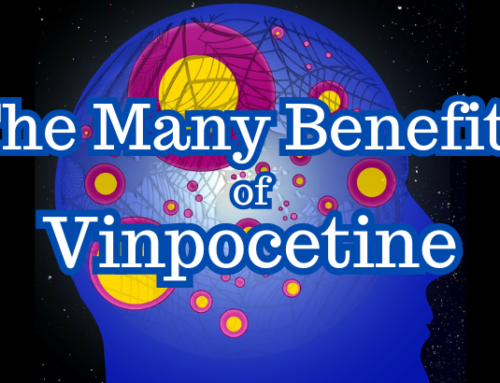
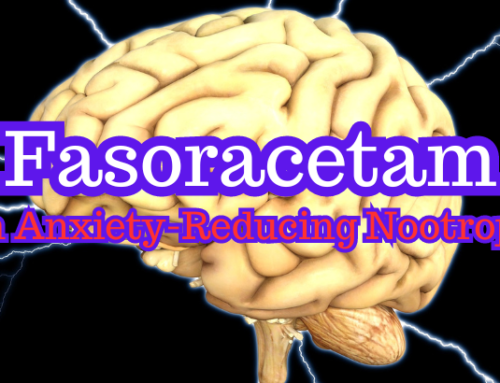
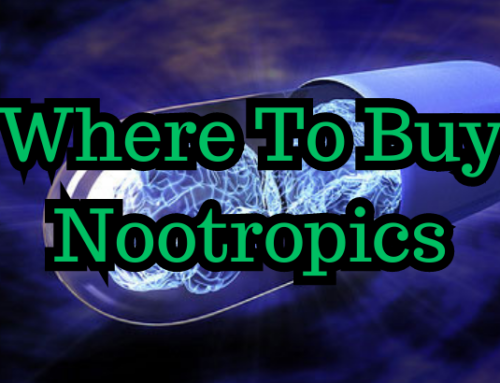
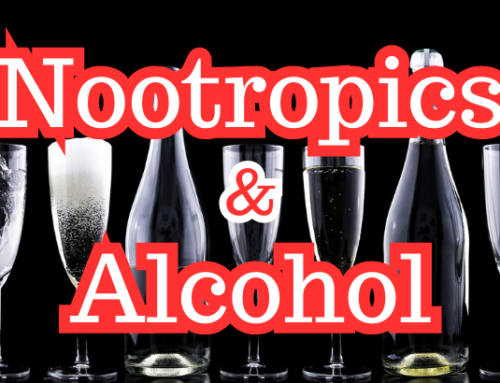
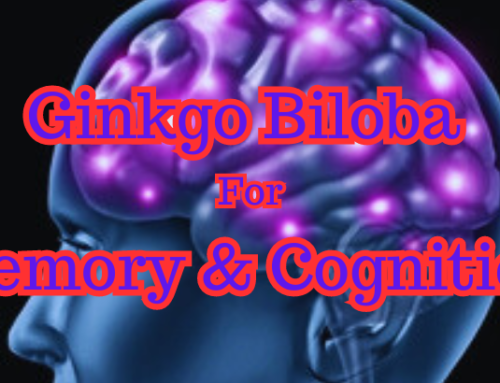

Hey! I had read a lot about nootropics and I found some information about natural nootropics that you may like.